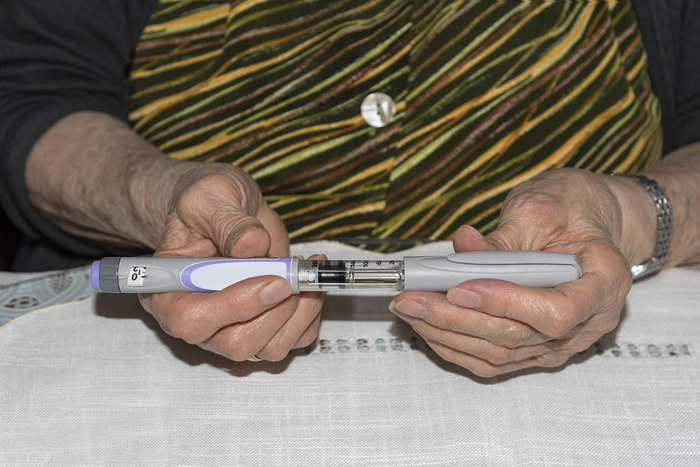TUCSON, Arizona — A new University of Arizona Health Sciences study found that people older than 45 whose Type 2 diabetes was treated with anti-hyperglycemic medications had an increased risk of multiple sclerosis, particularly among women, while anti-hyperglycemic exposure in people younger than 45 reduced that risk.
“Our findings reinforce the need for a precision medicine approach to preventing MS in these vulnerable populations,” said lead researcher Kathleen Rodgers, PhD, associate director of translational neuroscience at the Center for Innovation in Brain Science.
Multiple sclerosis (MS) is an unpredictable autoimmune neurological disorder that affects the central nervous system and leads to severe physical and cognitive disability. It is estimated that nearly 1 million adults in the U.S. and more than 2.8 million worldwide are living with MS.
For people with Type 2 diabetes, there is mounting evidence linking metabolic disorders and MS through a common driver of increased autoimmunity. This brings into question the impact of anti-hyperglycemic therapeutics used to treat Type 2 diabetes, including insulin, on the incidence of MS.
“Previous research has shown a neuroprotective effect of anti-hyperglycemic medications in Alzheimer’s disease and other related dementias,” Dr. Rodgers said. “For MS, we wanted to further examine age and sex differences, particularly among men and women under 45 with Type 2 diabetes.”
They found that men older than 45 years old had a slightly significant increase of MS risk and women older than 45 years exhibited a significant increase in MS incidence after anti-hyperglycemic exposure. In addition to age differences, the risk analysis by drug class showed that exposure to insulin in patients older than 45 years old was associated with a greater increased risk compared with other therapies.
In patients younger than 45, anti-hyperglycemic exposure was protective against the development of MS.
The study utilized a U.S.-based insurance claims database of 151 million participants to identify more than 5 million patients with a diagnosis of Type 2 diabetes and either early-onset or late-onset MS. Researchers segmented the data by age – patients diagnosed with Type 2 diabetes prior to or after age 45 – and sex to decode the factors driving MS risk in both populations, especially in women over 45 years of age.
The paper, “Age and sex differences on anti-hyperglycemic medication exposure and risk of newly diagnosed multiple sclerosis in propensity score-matched type 2 diabetics,” was published recently in the journal Heliyon.
Co-authors from the Center for Innovation in Brian Science include Roberta Diaz Brinton, PhD, director and Regents Professor; Francesca Vitali, PhD, research assistant professor of neurology; Georgina Torrandell-Haro, doctoral candidate and graduate research assistant; and Gregory Branigan, PhD, third-year medical student in the UArizona College of Medicine – Tucson’s MD-PhD program.
This research was supported in part by the National Institute on Aging (P01AG026572, T32AG061897, R37AG053589) and the National Institute of Neurological Disorders and Stroke (R25NS107185), both divisions of the National Institutes of Health.

Credit: Getty Images
TUCSON, Arizona — A new University of Arizona Health Sciences study found that people older than 45 whose Type 2 diabetes was treated with anti-hyperglycemic medications had an increased risk of multiple sclerosis, particularly among women, while anti-hyperglycemic exposure in people younger than 45 reduced that risk.
“Our findings reinforce the need for a precision medicine approach to preventing MS in these vulnerable populations,” said lead researcher Kathleen Rodgers, PhD, associate director of translational neuroscience at the Center for Innovation in Brain Science.
Multiple sclerosis (MS) is an unpredictable autoimmune neurological disorder that affects the central nervous system and leads to severe physical and cognitive disability. It is estimated that nearly 1 million adults in the U.S. and more than 2.8 million worldwide are living with MS.
For people with Type 2 diabetes, there is mounting evidence linking metabolic disorders and MS through a common driver of increased autoimmunity. This brings into question the impact of anti-hyperglycemic therapeutics used to treat Type 2 diabetes, including insulin, on the incidence of MS.
“Previous research has shown a neuroprotective effect of anti-hyperglycemic medications in Alzheimer’s disease and other related dementias,” Dr. Rodgers said. “For MS, we wanted to further examine age and sex differences, particularly among men and women under 45 with Type 2 diabetes.”
They found that men older than 45 years old had a slightly significant increase of MS risk and women older than 45 years exhibited a significant increase in MS incidence after anti-hyperglycemic exposure. In addition to age differences, the risk analysis by drug class showed that exposure to insulin in patients older than 45 years old was associated with a greater increased risk compared with other therapies.
In patients younger than 45, anti-hyperglycemic exposure was protective against the development of MS.
The study utilized a U.S.-based insurance claims database of 151 million participants to identify more than 5 million patients with a diagnosis of Type 2 diabetes and either early-onset or late-onset MS. Researchers segmented the data by age – patients diagnosed with Type 2 diabetes prior to or after age 45 – and sex to decode the factors driving MS risk in both populations, especially in women over 45 years of age.
The paper, “Age and sex differences on anti-hyperglycemic medication exposure and risk of newly diagnosed multiple sclerosis in propensity score-matched type 2 diabetics,” was published recently in the journal Heliyon.
Co-authors from the Center for Innovation in Brian Science include Roberta Diaz Brinton, PhD, director and Regents Professor; Francesca Vitali, PhD, research assistant professor of neurology; Georgina Torrandell-Haro, doctoral candidate and graduate research assistant; and Gregory Branigan, PhD, third-year medical student in the UArizona College of Medicine – Tucson’s MD-PhD program.
This research was supported in part by the National Institute on Aging (P01AG026572, T32AG061897, R37AG053589) and the National Institute of Neurological Disorders and Stroke (R25NS107185), both divisions of the National Institutes of Health.
Journal
Heliyon
DOI
10.1016/j.heliyon.2022.e11196
Article Title
Age and sex differences on anti-hyperglycemic medication exposure and risk of newly diagnosed multiple sclerosis in propensity score matched type 2 diabetics
Article Publication Date
22-Oct-2022




